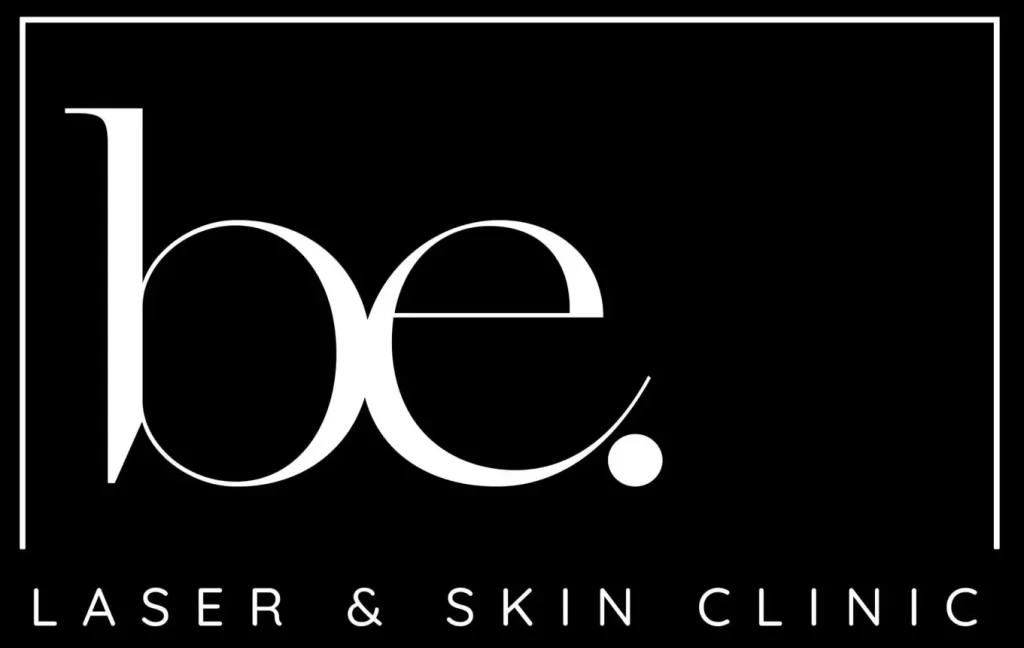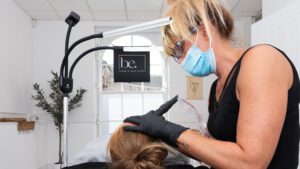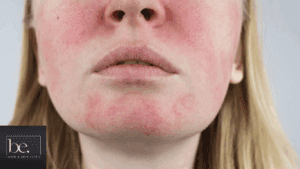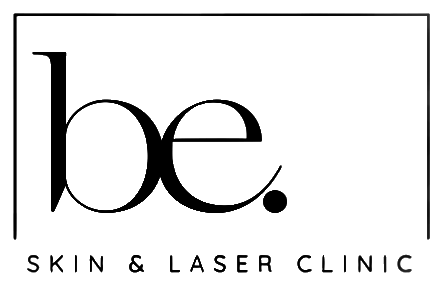Right, so you’ve booked your laser consultation and you’re buzzing with questions. Whether you’re new to this or just need a quick refresher, these Laser consultation questions will make sure you don’t walk in blind. Let’s keep it simple and cover the bits that really matter, from who’s holding the wand to what happens once you’re out the door.
Key Takeaways
- Check the technician’s qualifications and how many sessions they’ve done
- Find out what machine they’ll use, how many treatments you’ll need and the total cost
- Ask about prep steps before and aftercare tips to dodge any unwanted side effects
1. Technician Qualifications
When you’re thinking about getting laser hair removal, it’s not just about the fancy machines; it’s also about who’s wielding them. You wouldn’t let just anyone cut your hair, would you? Same principle applies here. It’s vital to check the qualifications of the person who’ll be zapping away your unwanted fuzz.
- What training have they had?
- How long have they been doing this?
- Are they actually certified to use the specific laser they’ll be using on you?
It’s easy to get caught up in the excitement of finally ditching the razor, but don’t skip this step. A well-trained technician can make all the difference between a smooth experience and a skin disaster.
It’s perfectly reasonable to ask about their background and experience. Don’t be shy! You’re paying for a service, and you deserve to know you’re in safe hands. A good clinic will be happy to provide this information. After all, they’ll be proud of their team’s credentials. Make sure they have the right laser training and experience.
Experience really does count here. A technician who has performed thousands of treatments and worked with different skin tones will have a level of knowledge that someone fresh out of training simply can’t match.
2. Technician Consistency
It’s worth thinking about who’s actually zapping you! You don’t want a different person every time, do you? It’s like going to a hairdresser and getting a new stylist each visit – you never know what you’re going to get! Ideally, you want the same technician throughout your entire course of laser hair removal.
- Will you have the same technician for all your sessions?
- What happens if they leave or are unavailable?
- Is there a system in place to ensure consistency even if there are personnel changes?
Building a rapport with your technician can make the whole process more comfortable. Plus, they’ll get to know your skin and how it reacts to the laser, which can lead to better results. It’s all about that personal touch, innit?
3. Suitability Criteria
Okay, so you’re keen on zapping away unwanted hair, but are you actually a good candidate for laser treatment? It’s a fair question, and one you definitely need to ask during your consultation. Not everyone is suitable, and it’s better to know upfront than to waste time and money.
The most important thing is to be honest about your medical history and skin type.
Think of it like this:
- Skin Tone and Hair Colour: Generally, the best candidates have fair skin and dark hair. The laser targets the pigment in the hair follicle, so the greater the contrast, the better the results. If you’ve got light blonde, red, or grey hair, it might not work so well. White hair, sadly, is a no-go, as there’s no melanin for the laser to target.
- Medical Conditions: Certain medical conditions or medications can make you unsuitable for laser hair removal. For example, if you’re pregnant, have a skin infection, or are taking certain medications that make your skin more sensitive to light, you might need to postpone or avoid treatment. It’s always best to err on the side of caution. If you are looking for laser hair removal in Taunton, make sure to disclose all relevant medical information.
- Tanned Skin: Tanned skin, whether from the sun or a sunbed, can increase the risk of side effects like burns or pigmentation changes. It’s usually recommended to avoid tanning for several weeks before and after treatment.
It’s worth remembering that laser hair removal isn’t a one-size-fits-all solution. What works for your mate might not work for you, and that’s perfectly alright. The key is to have an open and honest chat with the technician to determine if it’s the right option for you.
4. Preparation Requirements

Okay, so you’ve booked your laser appointment – great! But before you rock up expecting instant results, there’s a bit of prep work involved. Think of it like preparing a canvas before painting; the better the prep, the better the outcome.
- Shaving is usually a must. The laser targets the pigment in the hair follicle, so the hair needs to be short. Usually, you’ll be asked to shave the area a day or two before your appointment. Don’t worry, they’ll tell you exactly when!
- Sun exposure is a big no-no. Tanned skin can interfere with the laser and increase the risk of side effects. Avoid sunbathing, sunbeds, and even fake tan for at least two weeks before your treatment. Slather on the SPF if you’re going to be outside.
- Certain products need to be avoided. Some skincare products, like retinoids or strong exfoliants, can make your skin more sensitive. Your technician will give you a list of things to avoid in the lead-up to your appointment.
It’s really important to follow these instructions carefully. Not doing so could mean your treatment is less effective, or worse, you could end up with unwanted side effects. Listen to your technician, they know their stuff!
It’s all about making sure your skin is in the best possible condition for the laser hair removal to work its magic. Think of it as a team effort between you and the laser!
5. Technology Options
So, you’re thinking about laser hair removal? Cool! But did you know there’s more than one type of laser out there? It’s not a one-size-fits-all situation, and the tech they use can seriously impact your results (and your comfort!).
It’s worth asking your technician about the different laser options they have available. Some clinics might only have one type, while others boast a whole range. Knowing the pros and cons of each can help you make a more informed decision. Don’t be afraid to ask them to explain it in plain English – no jargon allowed!
Here’s a quick rundown of some common laser types:
- Alexandrite: Great for lighter skin tones.
- Diode: Works well on a wider range of skin tones.
- Nd:YAG: Often the go-to for darker skin tones, but can be used on others too.
It’s important to remember that not all lasers are created equal. Some are better suited for certain skin types and hair colours than others. A good clinic will assess your individual needs and recommend the best option for you.
It’s also worth asking about any other technologies they use, like cooling systems. These can make the treatment much more comfortable. Some clinics also offer IPL skin treatments alongside laser, so it’s worth understanding the difference.
6. Device Specifications
Okay, so you’re getting down to the nitty-gritty! It’s not just about laser versus IPL, but also the specifics of the machine they’re using. Don’t be afraid to ask questions – it’s your skin, after all!
Knowing the device specifications can help you understand the potential effectiveness and safety of the treatment. It’s like knowing the engine specs of a car before you buy it – you want to make sure it’s up to the job!
Here’s what to consider:
- Laser or IPL? Make sure they are using a reputable, high grade platform that is either LASER or IPL, as both platforms show proven results. Avoid devices using LHE or LED, as these are not designed for long term hair removal.
- Cooling System: Does the device have built-in cooling? Newer devices often have this, which can make the treatment way more comfortable. If not, will they use an anaesthetic cream? Built-in cooling keeps the treatment head "cold to the touch" as it pulses on the skin, significantly reducing any pain & discomfort.
- Wavelength: Different wavelengths are better suited for different skin tones and hair colours. Ask what wavelength the device uses and why it’s appropriate for you.
It’s also worth asking if they have advanced technology available and what kind of lasers they use, such as Harmony XL Pro. Don’t be afraid to ask for the make and model of the device – a reputable clinic should be happy to share this information. After all, you want to be sure you’re getting the best possible treatment!
7. Cost Breakdown

Okay, let’s talk money. It’s probably one of the first things on your mind, right? Getting a clear idea of the costs involved is super important before you commit to any laser treatment. You don’t want any nasty surprises later on!
- Per-session cost: Find out the price for a single treatment. This is useful if you’re not sure how many sessions you’ll need.
- Package deals: Many clinics offer discounts if you buy a package of multiple sessions. It’s worth asking if this works out cheaper in the long run.
- Hidden fees: Always, always ask if there are any extra costs involved, like consultation fees or aftercare products.
It’s a good idea to get a written quote that breaks down all the costs involved. This way, you have a clear record of what you’re expected to pay and can avoid any misunderstandings down the line.
Think about the overall value. It’s not just about the cheapest price; it’s about the quality of the treatment and the experience you’ll have. Consider it an investment in yourself! You can find a detailed breakdown of laser treatment costs in Somerset to help you get a better idea of what to expect.
8. Treatment Frequency
So, you’re thinking about laser hair removal? Good choice! But how often will you need to go? That’s a key question to ask during your consultation. It’s not a one-size-fits-all answer, unfortunately. Loads of things can affect it, like your skin type, hair colour, and the area you’re treating.
Generally, you’re looking at multiple sessions. Why? Because hair grows in cycles. The laser is most effective when the hair is in its active growth phase (anagen). Since not all hairs are in that phase at the same time, you need several treatments to catch them all.
Most places recommend spacing treatments about 6-8 weeks apart. This allows enough time for the next batch of hairs to enter the active growth phase. Rushing it won’t get you better results; it’ll just waste your money and potentially irritate your skin.
Don’t fall for places promising amazing results after just one or two sessions. It’s a red flag. Proper laser hair removal takes time and consistency.
Here’s a rough idea of what to expect:
- Initial consultation and patch test
- 6-8 weeks between sessions
- 4-8 sessions for significant hair reduction
- Maintenance treatments (possibly) to keep things in check
Keep in mind that these are just averages. Some people might need more sessions, others less. It’s all about having realistic expectations and finding a clinic that’s honest about the process. If you’re considering Planoplas Pro Plasma Fibroblast therapy in Taunton for skin tightening, the treatment frequency will be different, so make sure you ask about that too!
9. Potential Side Effects
Okay, so let’s be real – no treatment is completely without its downsides. It’s super important to have a proper chat about what could potentially go wrong before you even think about booking your first laser session. It’s better to be prepared, right?
Knowing the possible side effects means you can spot them early and get them sorted.
Here’s the thing: laser treatments mess with your skin, and sometimes it reacts. It’s not always sunshine and rainbows, but most issues are temporary, thankfully. Still, you need to know what you’re signing up for.
It’s worth remembering that everyone’s skin is different. What happens to your mate might not happen to you. That’s why a good consultation is so important – they should assess your skin and tell you what your risks are.
Some things to keep in mind:
- Redness and irritation are pretty common right after a session. Think of it like a mild sunburn. Usually fades within a day or two.
- Changes in skin pigmentation can happen, especially if you’ve got darker skin. This could mean darker or lighter patches. It’s usually temporary, but it’s worth discussing with the technician.
- In rare cases, you might get blisters or even scarring. This is why choosing a qualified technician is so important – they know how to minimise these risks.
- Eye damage is a risk if you’re having laser treatment near your eyes and aren’t properly protected. Always make sure you’re wearing the right safety goggles.
Don’t be afraid to ask your technician loads of questions. If they can’t give you clear answers, or if they brush off your concerns, that’s a massive red flag. You want someone who’s honest and upfront about the potential risks.
10. Aftercare Instructions
Okay, so you’ve braved the laser, and hopefully, you’re seeing the light at the end of the tunnel (hair-free skin!). But hold your horses; the job’s not quite done. What you do after your session is just as important as the treatment itself. Mess this bit up, and you could end up with irritation, pigmentation, or just plain rubbish results. So, listen up!
- Keep the area clean and dry. Think gentle cleansing, not scrubbing like you’re cleaning the kitchen sink.
- Avoid direct sunlight like the plague. Seriously, UV rays are not your friend right now. Slap on that SPF, even on cloudy days.
- No hot baths, saunas, or intense workouts for at least 24-48 hours. You want to avoid raising your body temperature too much.
- Moisturise, moisturise, moisturise! Your skin will thank you for it. Use a gentle, fragrance-free lotion.
- Resist the urge to pick, scratch, or exfoliate the treated area. Let your skin heal naturally.
Aftercare is not just a suggestion; it’s a necessity. Think of it as investing in the longevity and effectiveness of your laser treatment. Skimp on it, and you might as well have thrown your money down the drain.
And if you notice anything weird – excessive redness, swelling, blistering – don’t hesitate to give the clinic a shout. Better safe than sorry, eh?
Wash the treated area gently with warm water and mild soap. Keep it out of the sun and skip hot baths for two days. If you have any questions or want to book your next session, hop over to our website and book now.
## Conclusion
That’s a wrap on the key things to ask at your laser consultation. It might feel odd to quiz your technician, but you’ll thank yourself later. You’re there to look after your skin and avoid any nasty surprises. If the answers sound sketchy or they dodge simple points like downtime or how many sessions you need, maybe look elsewhere. A good first chat sets the mood for the rest of your treatments. So next time you book in, jot down your questions, speak up and trust what you feel. Here’s to smoother skin and no regrets!
Frequently Asked Questions
Technician Qualifications: What training has your laser technician done?
They should have proper certificates and courses. Ask where they trained and how many hours they spent learning.
Technician Qualifications: How many treatments has the technician performed?
The more sessions they’ve done, the better. If they’ve done hundreds or thousands, they’ll know what works.
Technician Qualifications: Are they used to treating different skin tones?
A good tech will know how to adjust the laser for pale to dark skin. This cuts the risk of burns.




